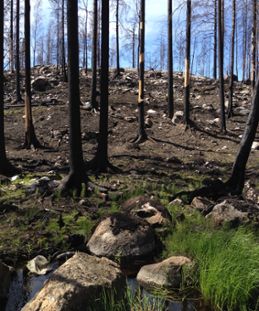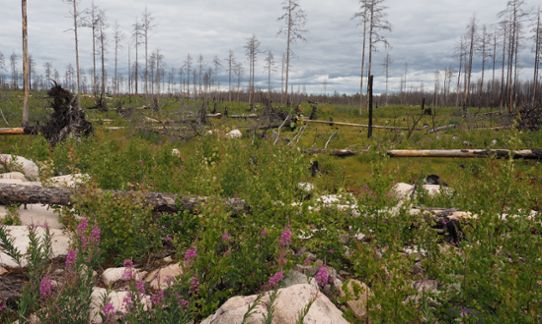
Following the major forest fire in Västmanland in 2014, the Formas research council carried out a strategic initiative to investigate various aspects of the impact of a forest fire. SMHI and the Swedish University of Agricultural Sciences (SLU) have conducted measurements of water supply and water flows both in and downstream of the fire area, to find out how they are changed by a forest fire.
“After the fire we had a different seasonal distribution of the water flows. In the autumn we had increased flows as the vegetation didn’t absorb as much water. In the spring the snow melted more quickly, as there wasn’t as much vegetation to shade and protect the snow,” says Berit Arheimer, Head of the Unit for Hydrological Research at SMHI.
Mostly local effects
The researchers were also able to confirm that the effects are most evident close to the fire area in the drainage areas, where more than half of the area had burnt. The effects were quickly diluted downstream.
“When we compare measurements in the fire area and downstream, we see that a forest fire has a pronounced local impact. If you compare with other changes, the changes in land use and vegetation have very little impact on water flows and water balance. Water regulation and climate variation have much more of an impact,” confirms Berit Arheimer.

Knowledge improves base data for decisions
The study improves the understanding of how a forest fire affects the water supply and water flows. The study involved a comparison of both affected and unaffected areas. The effects of the fire were also compared with other factors such as trees falling in storms, climate fluctuations and various human activities, for example urban growth and water regulation. The knowledge is used by SMHI’s researchers in the calculation models used for hydrological forecasts and future scenarios, in order to provide base data for decisions on how we can reduce our vulnerability to changes in the future.